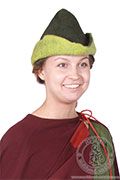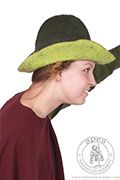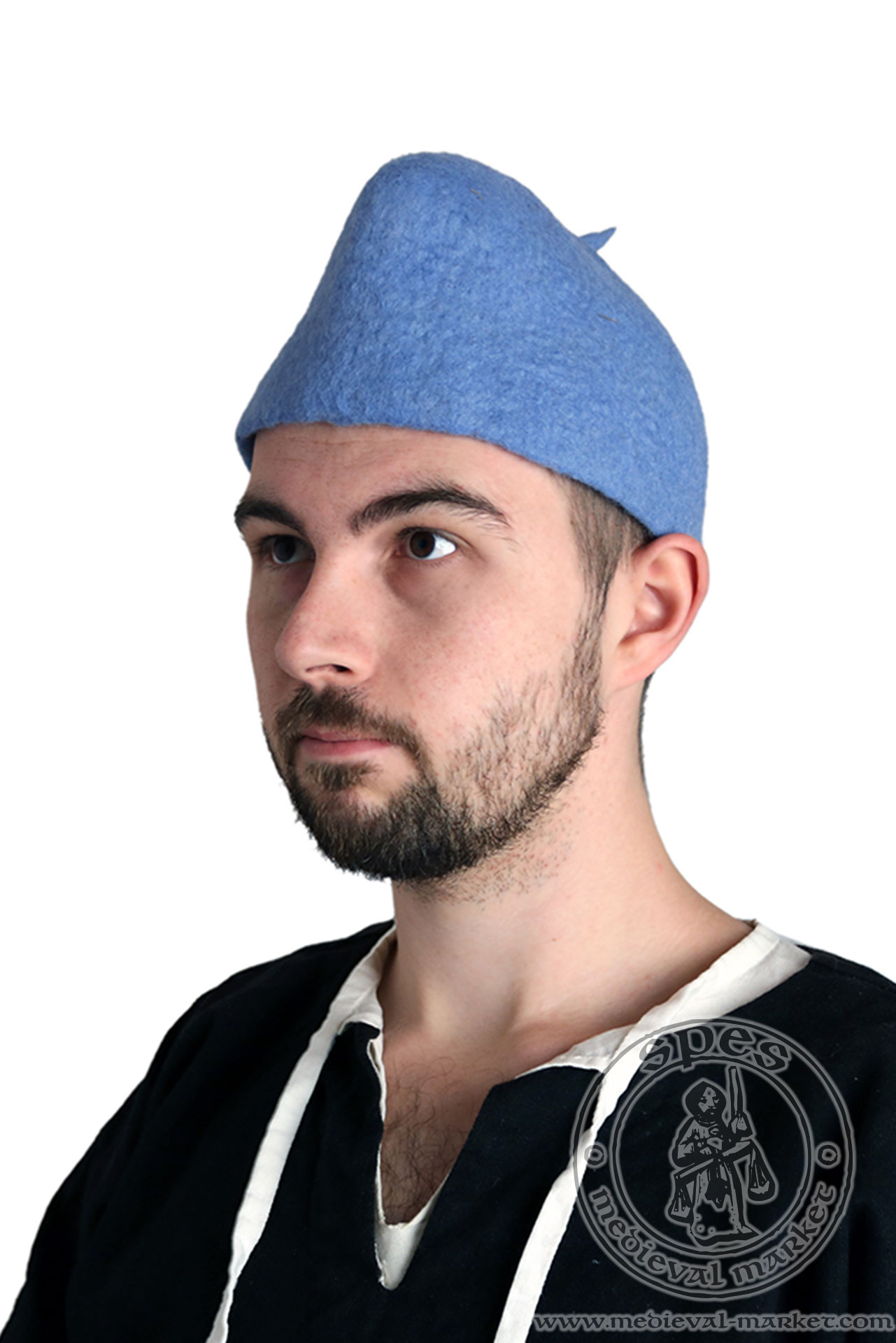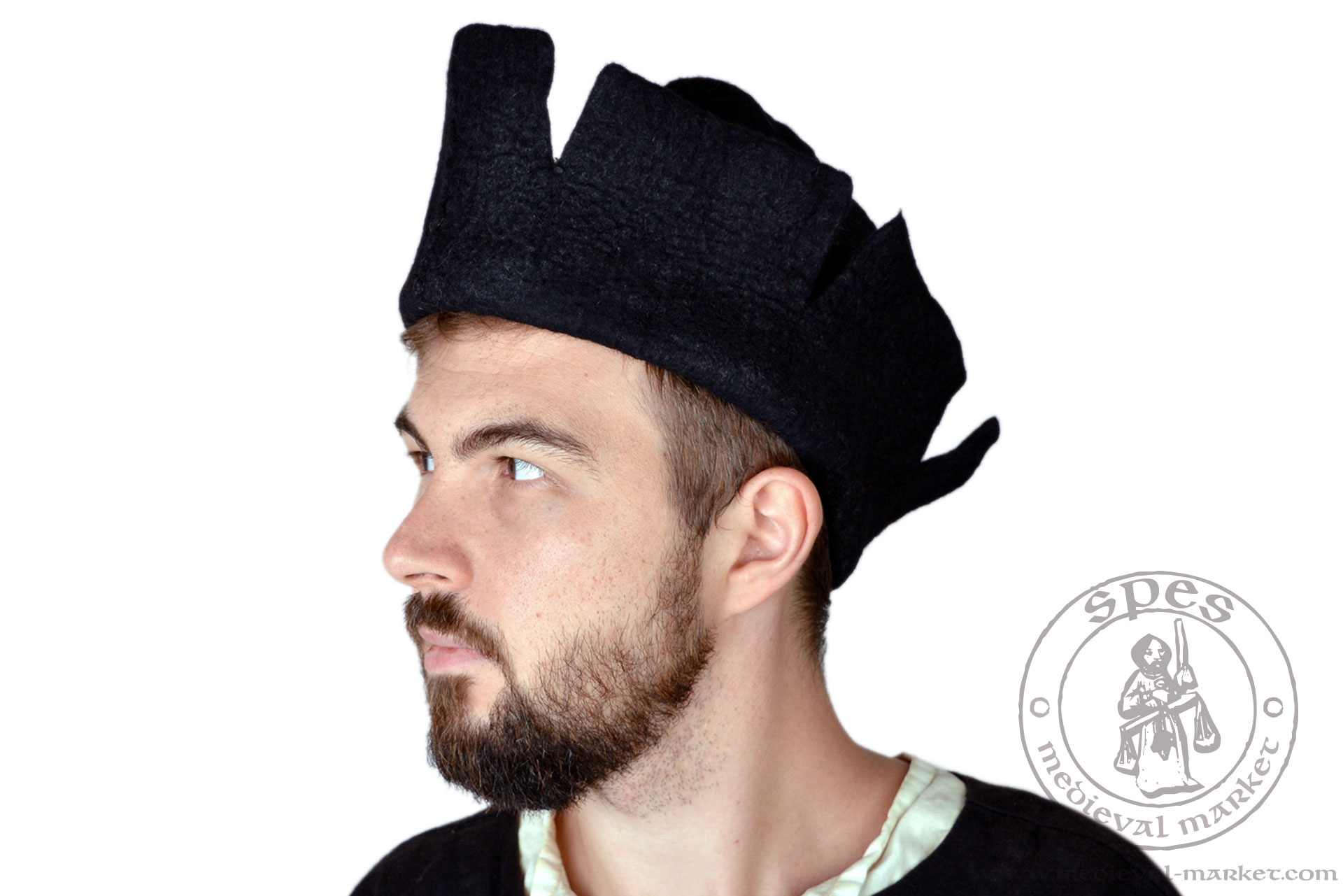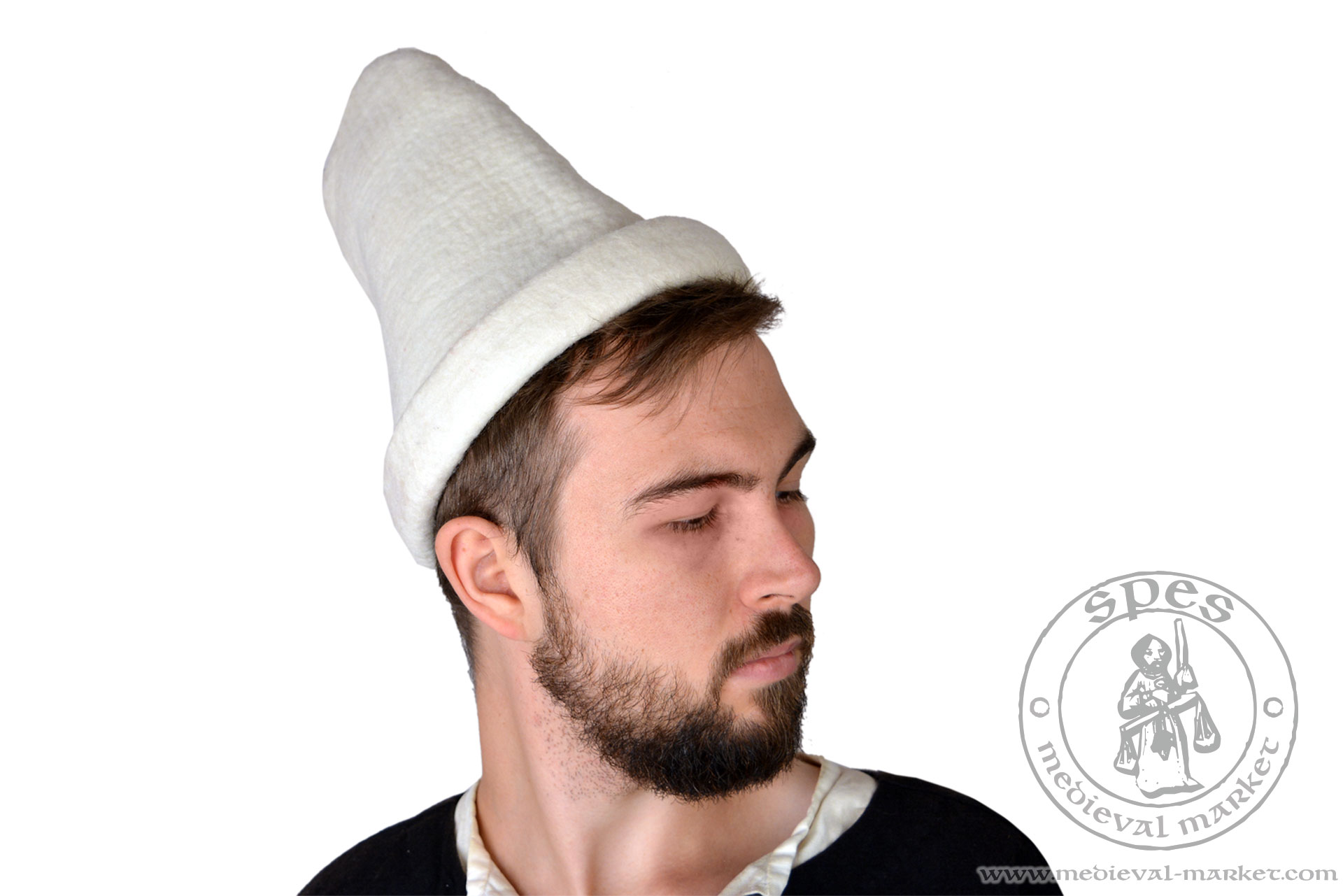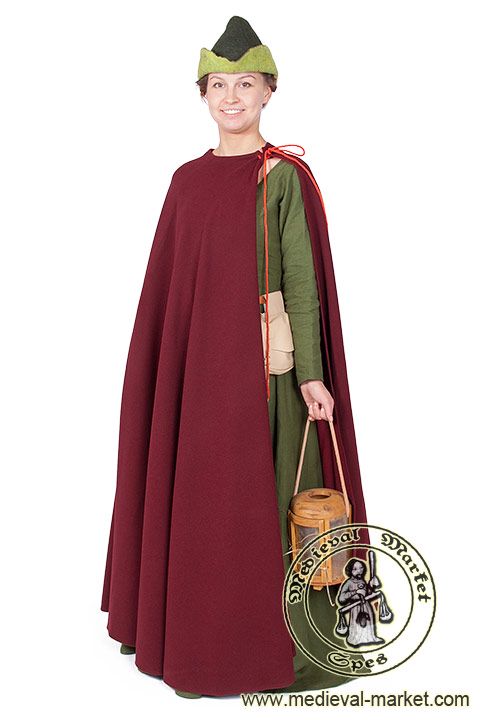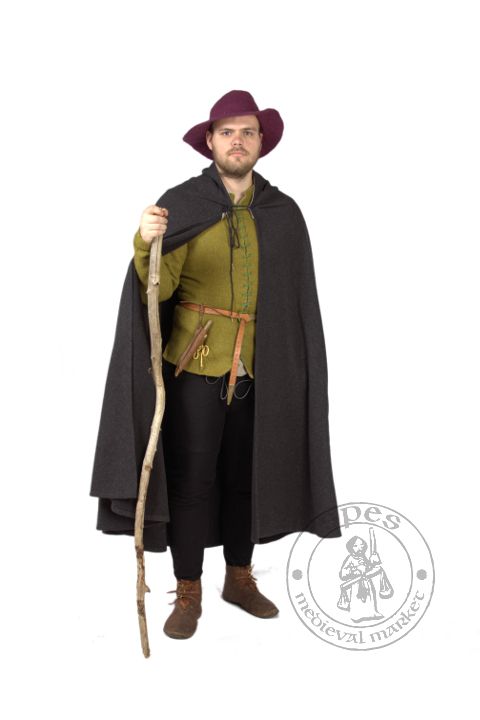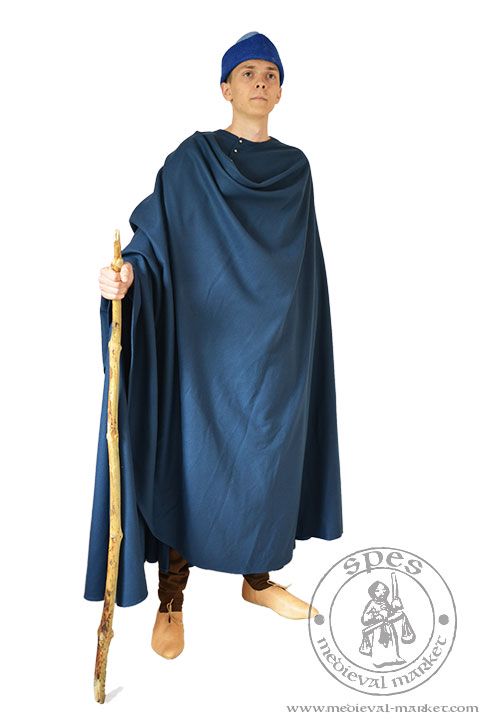If you wish to adjust your cookie preferences for this website, you can do so using your browser settings.



Category: Male clothing > medieval headwear
Medieval felt hat Pilgrim
Medieval felt hat Pilgrim
Century: XIII, XIV, XV| CODE | Material |
Standard
|
Price | |
| GFR0269 | Felt | Hand-made | 45.00 EUR |
|
Lowest price in the last 30 days
See how to place an order for several people
This medieval hat made of felt is a perfect choice for every medieval pilgrim, both male and female, but also for modern travellers. If you are going for a peregrination, our felt hat will help you in preparing for any weather conditions.
Medieval felt hat "Pilgrim" is fully handmade. To make this historical hat, we have used fleece. This makes our medieval hat universal - appropriate for any place in the world, against any weather conditions. Wool ensures high hygroscopicity level which lets it absorb a lot of moisture without the feeling of the hat being wet. What is more, fleece ensures a natural thermoregulation of the body.
Medieval iconography often presents medieval felt hats with tin badges, also available in our shop. We highly recommend those symbolizing a pilgrimage and journey: St. Jacob’s shell, St. Iosse oraz Fox and goose.
There is a wide range of colors to choose from in this medieval hat. You will find it here!
As it has a flipped edge, we can give it a different color on your request. When you will place an order, please enter CODE of the selected color/colors in additional information.

If you want your order to be realized FASTER, please provide us your head girth (B1) during placing it. This will speed up production, so your felt hat will come to you sooner!
NOTE - please remember that colors on pictures may slightly differ from the final product.
Medieval hat "Pilgrim" - versatility proven by sources
Medieval felt hat Pilgrim in this or slightly different form is visible on numerous historical sources. For example, The Vagabond by Hieronymus Bosch. The painting can be found in Museum Boijmans Van Beuningen in Rotterdam.On the other hand, medieval woman in this hat is visible on the fresco of Catedral de Santa Maria de la Seu Vella in Spanish Lleida.
Pilgrimage - an ancient tradition
Pilgrimage for religious reasons were known in the ancient times. In the biblical times Jews made pilgrimages to Jerusalem for Passover. Christians took over this tradition and even in the ancient times they made pilgrimages to the Holy Land. One of the first was made by Saint Helena. the mother of Emperor Constantine the Great. Knowledge on this phenomenon and customs of pilgrims from 4th century is gained from Itinerarium Burdigalense, the diary of a pilgrim from 333, who traveled from Bordeaux to the Holy Land.After taking over Palestine by Arabs in 7th century, pilgrimage turned to European cities. Two places became extremely popular among pilgrims: Rome, the capital city of Western Christianity and burial place of the apostles Peter and Paul, and Santiago de Compostela, which is connected with the cult of St. Jacob.
In Poland, the most popular destination of pilgrimage is Jasna Góra in Częstochowa, the spiritual capital city of nation and the storage place of Black Madonna depiction. Every Summer, thousands of Poles travel there on foot to kneel down before this amazing icon. Other popular destinations in Poland are Licheń, Kraków-Łagiewniki, and Wadowice.
In Islam, a Hajj, which is a pilgrimage to Mecca, is a duty for every Muslin and it is one of five pillars of this religion. Every year a Hajj gathers millions of Muslims in the Al-Kaba temple.
Felting and fulling - how to make a felt hat?
Fulling is a process of joining natural animal (wool of sheep, animal hair) or plant fibers. This method can give dozens of adornments, accessories, or parts of clothing, characteristic for both former and modern fashion.While making the felt, joined fibers are strengthened by hot water or chemicals, by pressing or rubbing. One can do it manually or with the use of a machine. The process is called fulling or felting.
Among others, there are two methods of felting used in making felt hats:
- full wet method – with the use of water and joining material, like soap
- dry method – with dedicated needle or tracer (cutting wheel), layers of fibers are joined and pressed
In past, a person making felt products was called a fuller.
What is felt used in medieval hats?
Woolen felt is one of the oldest human made textile materials. First marks of felt are dated on 6500 BC and come from area of modern Turkey, where Neolithic wall painting were found. A collection of felt products found in Altai are dated 7th-6th century BC.Felt was used for centuries in making headwear like caps, hats or berets, but also in making footwear. It is an all-purpose material, used not only in clothing. It is used in insulating and soundproofing materials, and as a veneer for keys in keyboards and pianos.
There are legends on the creation of felt fibre. One of them says that it reaches the time of Noah’s Ark where sheep lost their wool on wet floor. It was trampled and later found by surprised Noah in a form of a carpet!
Another story says about Mondolian horse riders who put sheep fur under their saddles. It was rubbed during a journey and later found in a hardened form.
The most interesting story is connected with the patron of fullers – St. Clement. A pope during his pilgrimage in the 1st century scraped his legs. To relieve his feet, he put wool pieces into his sandals. Rubbing and sweat formed it into felt.





 Female Clothing
Female Clothing
 Accessories
Accessories Furniture
Furniture Tents
Tents Armament
Armament HMB Line
HMB Line Miscellaneous
Miscellaneous Rent
Rent In stock
In stock Special Offers
Special Offers Search
Search Your Account
Your Account About us
About us Sizing
Sizing How to buy
How to buy Blog
Blog Links
Links Events
Events




